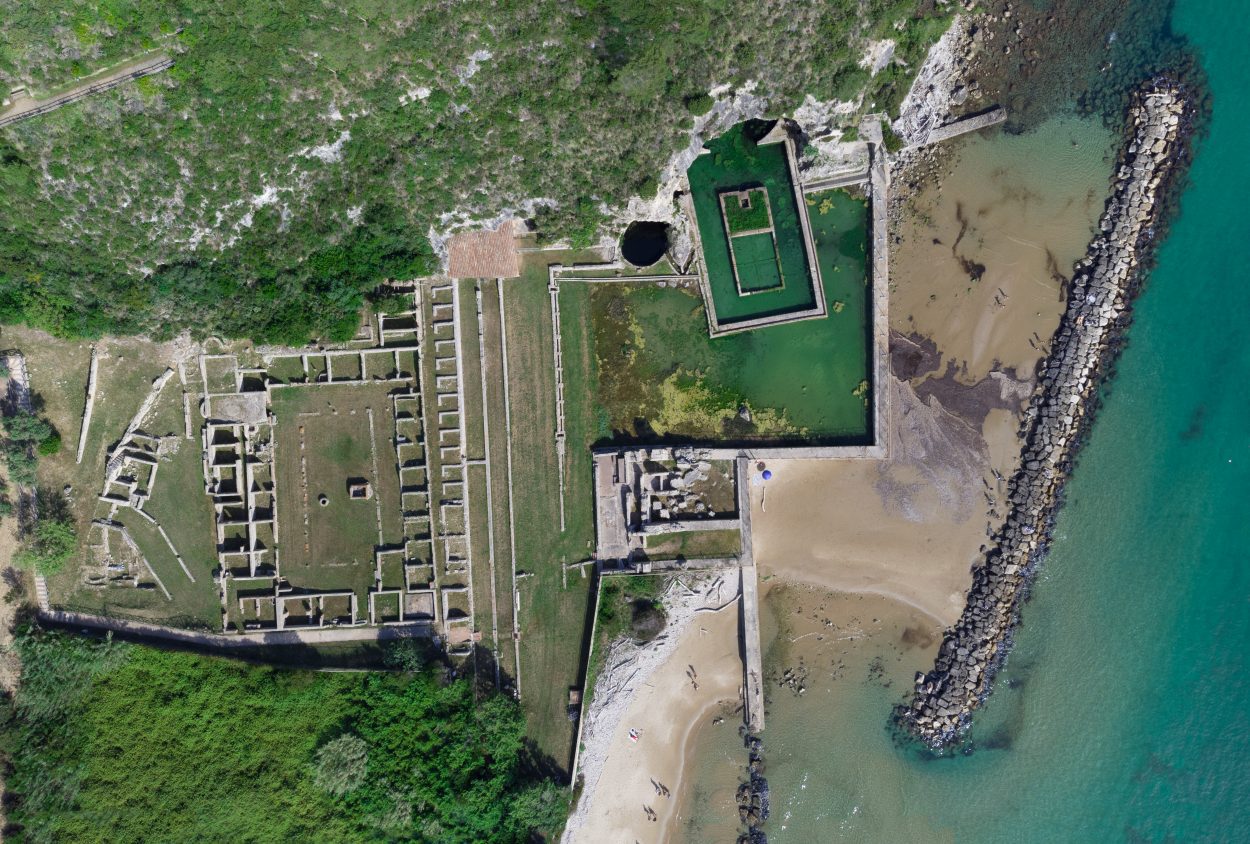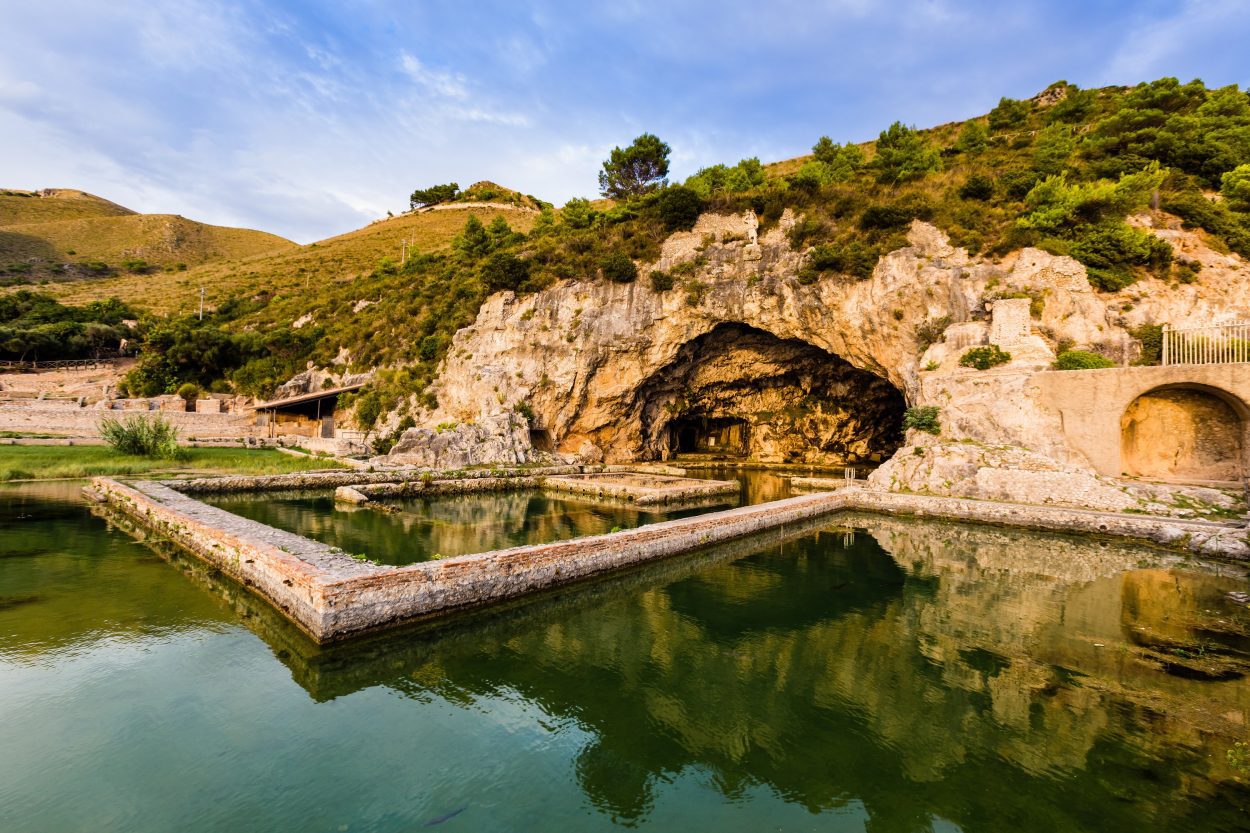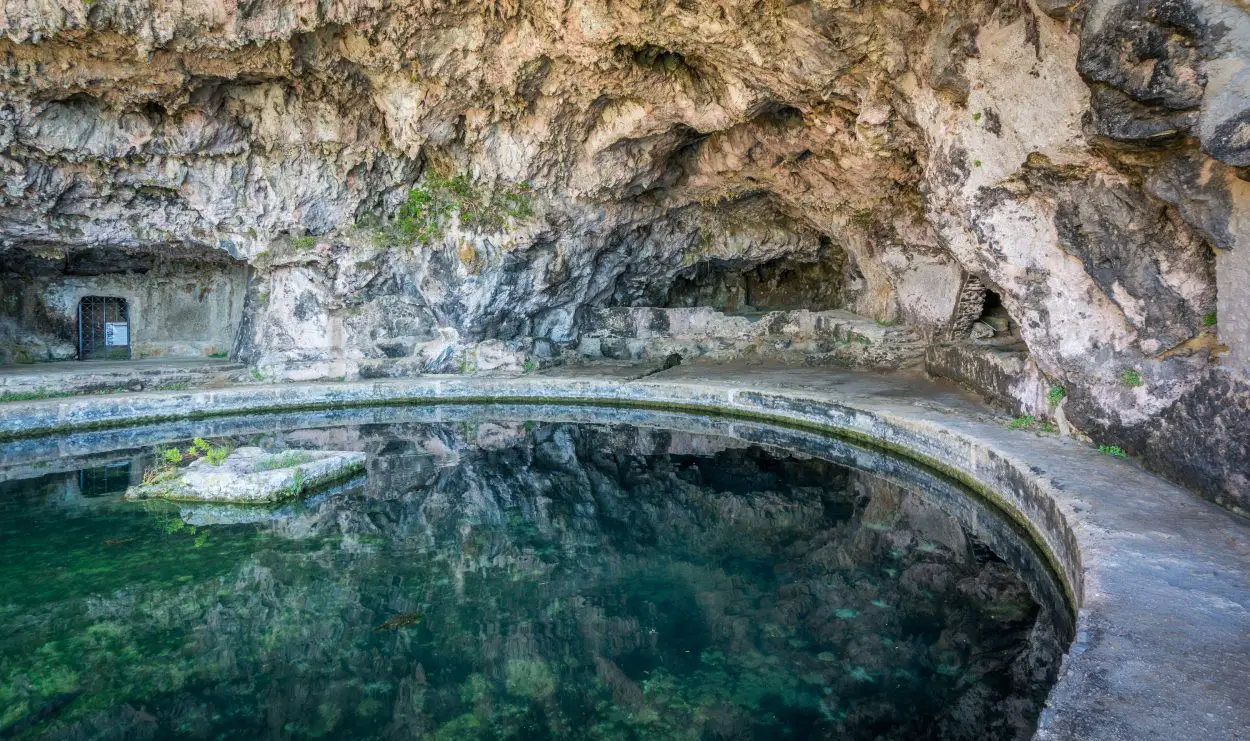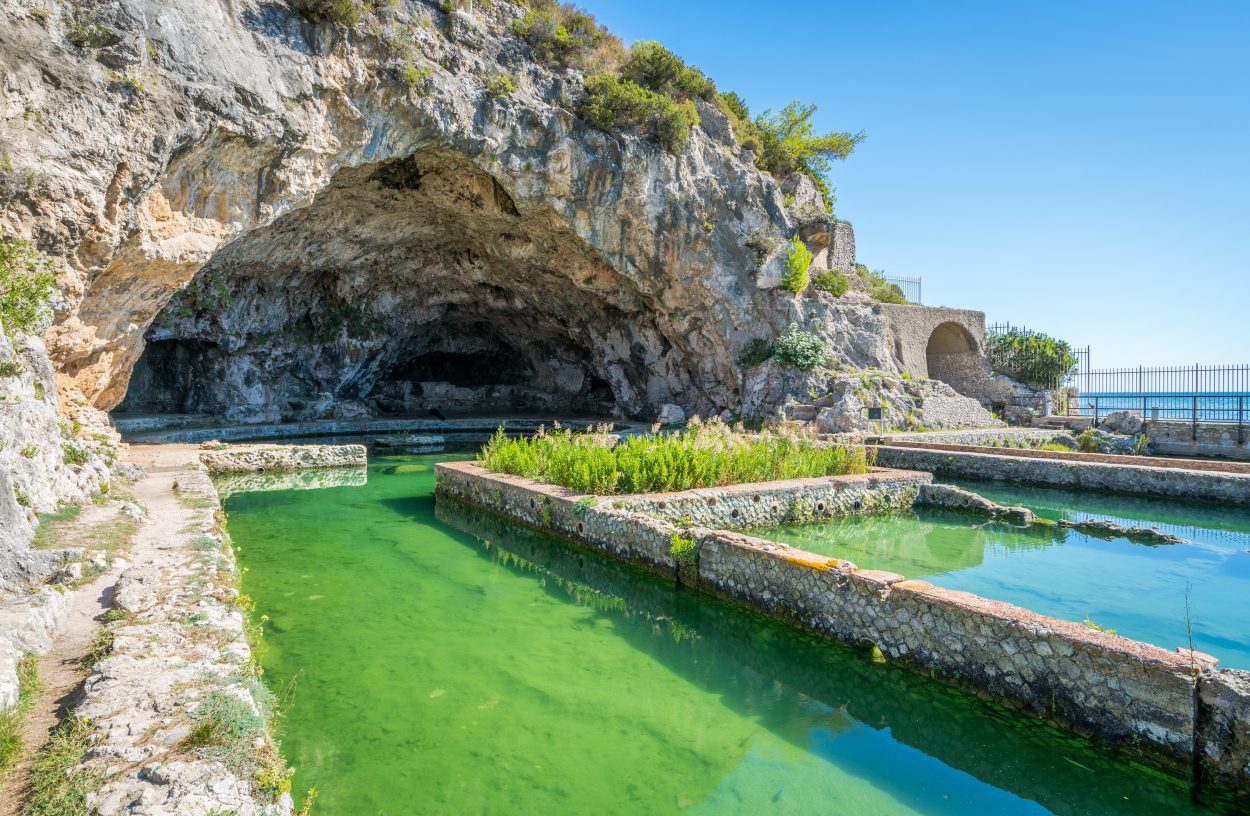The Villa of Tiberius is a Roman villa complex in the present-day town of Sperlonga, located on the western coast of Italy in the province of Latina.
The villa was first constructed during the Late Republican Era around 30 to 20 BC near to a large sea opening or grotto, for which “Spelunca” (Latin for cave or grotto) was named.
Emperor Tiberius expanded the site during the 1st century AD to serve as his own personal retreat, enhanced with a gymnasium, Roman baths, terraces, private moorings, and several pools fed by natural springs and salt water from a coastal lake.

The villa was Tiberius’s preferred venue for hosting elaborate dinner parties, with the focal centrepiece being a large natural cave containing a rectangular and circular pool. The interior of the cave was embellished with coloured opus sectile flooring, artificial stalactites and encrustations, statues called the Sperlonga sculptures, and a triclinium (a dining space with couches) centred on an island at the cave’s mouth.

Grand statues depicting mythological compositions had been popular during the time of the Julio-Claudians and can often be found in villas owned by members of the Imperial family. In Sperlonga, scenes derived from Greek Hellenistic literature of Homer and Virgil show four episodes of Odysseus’ travels, depicting Odysseus and the giant Cyclops Polyphemus, Odysseus’ encounter with the sea monster Scylla, Odysseus’ trials during the Trojan War, and Odysseus stealing the Palladion (a statue of Athena) from Diomedes. On a niche in the cliff face above the entrance to the cave was also Ganymede carried up by the Eagle, a disguise of Zeus.

According to the Roman historian Tacitus, In AD 26 Tiberius was dining in the cave with his confidant Sejanus, when the roof suddenly collapsed. Tacitus documents: “They were dining in a country house called the cave, between the gulf of Amuclæ and the hills of Fundi, in a natural grotto. The rocks at its entrance suddenly fell in and crushed some of the attendants; thereupon panic seized the whole company and there was a general flight of the guests. Sejanus hung over the emperor, and with knee, face, and hand encountered the falling stones; and was found in this attitude by the soldiers who came to their rescue.”

After the accident, Tiberius withdrew to Capri and spent the rest of his years removed from the administration of the Empire. He trusted Sejanus and Naevius Sutorius Macro to oversee the affairs of the Empire in his stead, but the two men instead plotted and tried to overthrow him.
In AD 31 Sejanus was summoned to a meeting of the Senate, where a letter from Tiberius was read condemning Sejanus and ordering his immediate execution. Sejanus was tried, and he and several of his colleagues were executed within the week.





